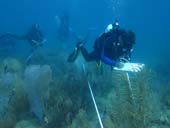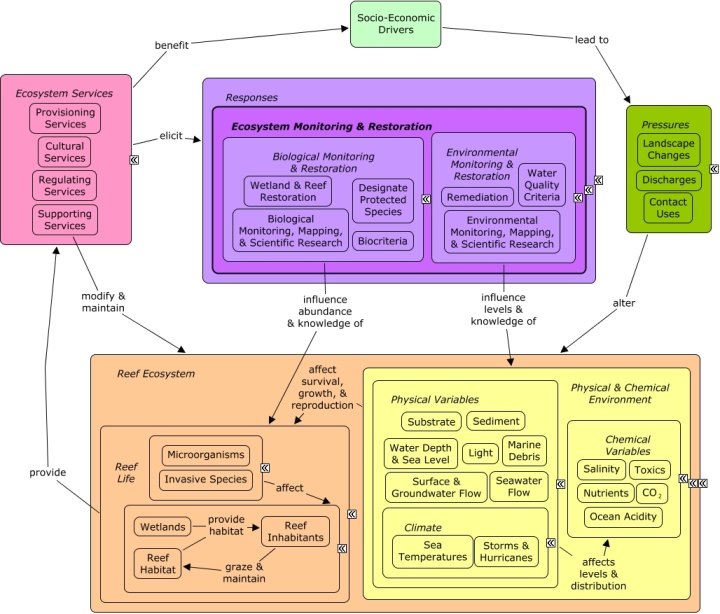ReefLink Database

Ecosystem Monitoring & Restoration
Ecosystem monitoring and restoration refers to responses to directly alter the condition of the reef ecosystem through restoration or remediation activities, setting limits on degradation through biological criteria or water quality criteria, or improving knowledge through monitoring, mapping, and scientific research.
CMap

CMap Description
A change in the provision of ecosystem services, or a desire to improve provision of ecosystem services, may elicit responses to directly alter the reef ecosystem. Wetland or reef restoration may include repairing damaged individuals, or replenishing degraded reefs or wetlands with nursery-grown individuals. Remediation activities can be implemented to physical remove sediment, reduce levels of pollution, or remove marine debris. Water quality criteria can be used to set the maximum desirable levels of contaminants in coastal waters; biological criteria describe the desired biological condition. Additional responses maybe needed to ensure that water quality criteria and biocriteria, once established, are achieved and maintained. Monitoring, mapping, and scientific research can be used to better understand changes in condition, bio-physical processes, and interactions among species, and how they may be impacted by various stressors or potential decisions. A healthy functioning reef ecosystem, beyond its existence or cultural value, is essential for a number of ecosystem goods and services, including shoreline protection, fishing, and recreational opportunities.Citations
More than 50 citations. Click here to load.
| Citation | Year | Study Location | Study Type | Database Topics |
|---|
Management Options
More than 50 management options. Click here to load.
| Management Option | Description | Sources | Database Topics |
|---|
Laws
More than 50 laws. Click here to load.
| Legal Citation | Purpose of Law | Management Organization | Database Topics |
|---|
